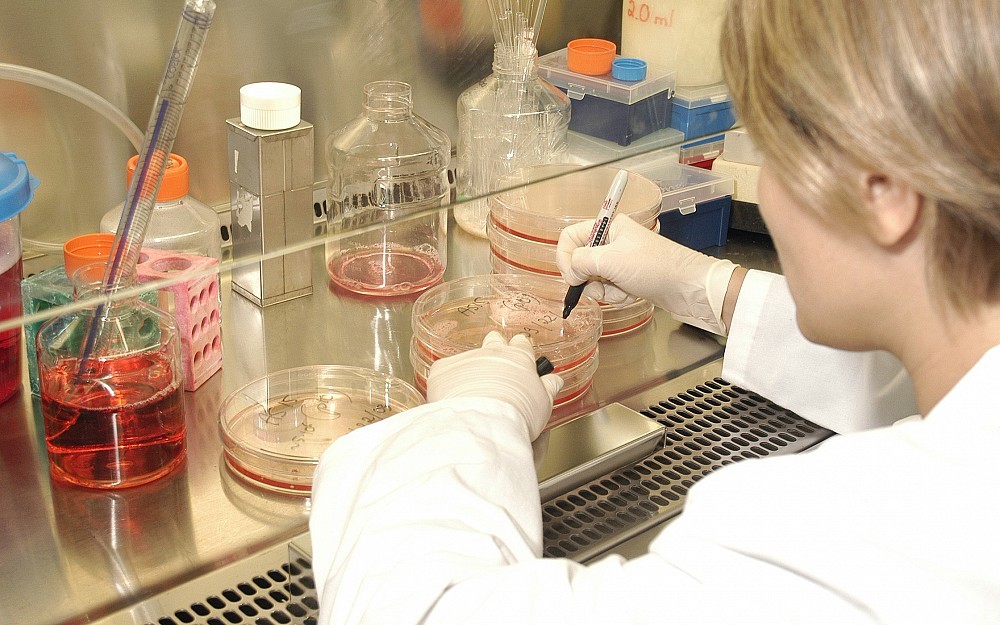
College of Medicine's Economic Impact Approaches $5 Billion
CINCINNATIThe University of Cincinnati College of Medicine, along with its affiliated teaching hospitals, generated $4.8 billion in economic impact for the region and across the state in 2007.
In addition, the college and its affiliates were responsible for more than 55,000 full-time equivalent jobs in Ohio and generated $151.1 million in total state tax revenue, according to a study commissioned by the Ohio Council of Medical Deans, chaired by UC College of Medicine Dean David Stern, MD.
The UC College of Medicine has tremendous economic impact on our immediate region and the state, says Stern. This impact is felt not only through tax revenue and job creation, but also through stimulating commerce and encouraging biomedical investment.
The study measured the economic impact of Ohios seven medical colleges and their teaching affiliates. In total, the UC College of Medicine and the six other medical colleges in Ohio contributed $37.2 billion to the states economy in 2007, an increase of approximately $16.5 billion from 2002.
Ohios colleges of medicine and their teaching affiliates are vital not only to the health of Ohioans, but also to the health of the states economy, says Stern.
The economic impact report also took into account attraction of highly competitive National Institutes of Health (NIH) funding. In 2007, the UC College of Medicine attracted more than $130 million in NIH dollars. Ohios academic medical industry as a whole accounted for 66 percent of the total NIH grants awarded to the state.
On a statewide level, the report found that for every $1 provided by the state in direct support to Ohios academic medical industry, approximately $10 was returned in tax revenue.
The UC College of Medicine has participated in previous economic impact reports; however those reports included data from neighboring states. The latest economic impact study was limited to Ohio in order focus attention on the states academic medicine enterprise.
UCs $4.8 billion impact was figured by totaling the direct and indirect impact of UC and its core and non-core teaching hospitals.
Core teaching hospitals include affiliates that provide clerkship experiences in major services, such as internal medicine, surgery and pediatrics. Those included in the report were University Hospital, Cincinnati Childrens Hospital Medical Center, the Cincinnati Department of Veterans Affairs Medical Center and Shriners Hospitals for ChildrenCincinnati. Non-core teaching hospitals included The Jewish Hospital, Bethesda Hospital, Drake Center, Good Samaritan Hospital, Clinton Memorial Hospital, Holzer Clinic, Gallipolis, and The Christ Hospital.
The economic impact report was produced by Tripp Umbach, which has conducted economic impact studies for hundreds of health care institutions and medical colleges throughout the country.
To learn more about the economic impact of Ohios academic medical colleges and to view reports from each of the states seven medical schools, visit www.medicinemeansbusiness.com.

David Stern, MD, Colllege of Medicine Dean, Vice President for Health Affairs
Related Stories
Can new rules in Ohio address a pharmacy staffing shortage and...
May 17, 2024
The University of Cincinnati's Michael Hegener joined WVXU's Cincinnati Edition to discuss recent rules released by the Ohio Board of Pharmacy designed to address pharmacy staffing.
Is ketamine the answer to treatment-resistant depression?
May 16, 2024
The University of Cincinnati's Stephen Rush joined WVXU's Cincinnati Edition to discuss the use of ketamine and esketamine to treat treatment-resistant depression.
UC study: Severe ischemic strokes rare in total patient...
May 15, 2024
The University of Cincinnati’s Yasmin Aziz will present research at the European Stroke Organisation Conference that found severe ischemic strokes with the most severe damage are rare in the total stroke patient population.
